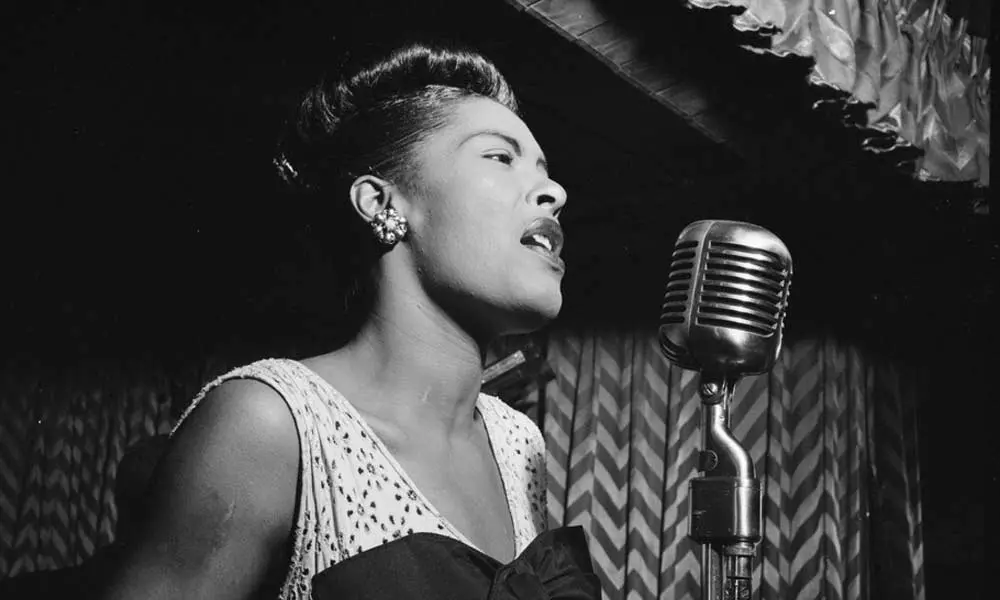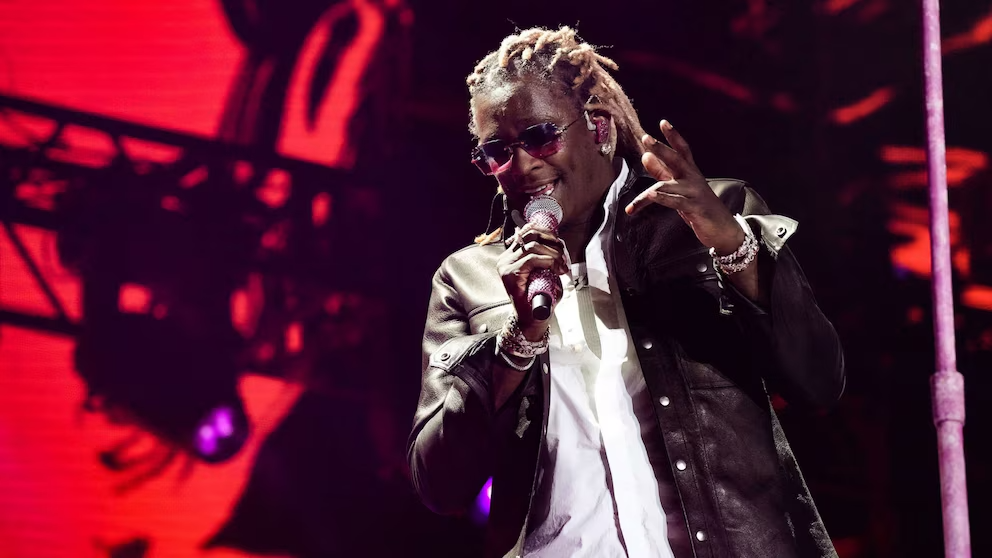Lyrics On Trial
Can a song be a crime? From censored jazz to courtroom rap, discover why music still scares the system.
In 1939, Strange Fruit by Billie Holiday was banned from American radio for being too dark, too raw, too unsettling. It laid bare the horrors of lynching in the American South, cloaked in the haunting notes of a jazz ballad. Nearly a century later, music remains a powerful tool for confronting uncomfortable truths — and for that very reason, it’s still under fire. The contexts have changed, but the tension persists: where is the line between artistic expression and dangerous speech? And who gets to draw it?
Billie Holiday performing Strange Fruit in 1939. Photo: William Gottlieb/Redferns. Source: UDiscovermusic.com © All rights belong to their respective owners. No copyright infringement intended
One of the most debated flashpoints in recent years is the #ProtectBlackArt campaign — a movement born in response to prosecutors using rap lyrics as criminal evidence. At the center of this controversy are artists like Young Thug and Gunna, indicted in Georgia on serious charges including racketeering. Among the evidence presented in court? Their lyrics. Lines like “I shot his mama” were stripped of context and cited as proof of criminal intent, ignoring the hyperbolic, metaphor-heavy nature of rap. The contradictions are glaring. The same music industry that profits from provocative content now positions itself as the guardian of free speech. Still, the issue remains: can the criminal justice system judge art with literal, selective criteria — divorced from its cultural context?
Young Thug performing onstage during the 2021 Life Is Beautiful Music & Art Festival in Las Vegas. Photo: Jeff Kravitz/FilmMagic for Life is Beautiful via Getty Images. Source: abcnews.go.com © All rights belong to their respective owners. No copyright infringement intended
Yet if we argue that lyrics shouldn’t be read as confessions, we must also confront another truth: not all artistic expression is benign. The line between creative freedom and the normalization of violence is delicate — and increasingly blurred. Reports like the UK Parliamentary study of 2024 and investigations by The Guardian reveal how deeply sexism, misogyny, and the glorification of violence have infiltrated mainstream pop and urban music, especially in tracks targeting younger generations. This isn’t just about artistic style or provocation. Studies cited by Deseret News highlight how repetition of harmful themes can influence attitudes and behavior, particularly among adolescents still shaping their worldviews.
Herein lies the paradox: while some artists are criminalized for telling their truth, others who use music to expose injustice or portray marginalized realities are silenced for being “too real.” Billie Holiday's Strange Fruit wasn’t the only song to be deemed "unfit for public consumption." Cole Porter’s Love for Sale, for instance, was pulled from radio for referencing prostitution — not glorifying it, simply acknowledging it. What makes one form of expression “dangerous” and another merely “controversial”? This leads us to murkier territory — where censorship no longer appears guided by moral consistency but by cultural, social, or even political interests. This is where tension festers. Censorship can protect, but it can also suffocate. It can combat hate, or it can suppress inconvenient truths.
On one side, defenders of artistic freedom decry a society obsessed with political correctness, where every lyric is dissected and policed. On the other, a growing awareness of how certain language patterns reinforce toxic norms leads to calls for accountability — especially when words turn into weapons that perpetuate discrimination, violence, or hate. Artists themselves are increasingly aware of this duality. Some choose to evolve, shift tone, or self-censor. Others dig in, defying the system — often at the cost of being de-platformed, blacklisted, or shadow-banned. But this raises the ultimate question: who gets to decide where expression ends and incitement begins? Who determines the line between art and abuse, reflection and provocation?
Gloria Parker, firebrand of the CBS annual stockholders meeting, parades in front of the RCA building crusading for the extinction of Rock 'n Roll music. Photo: Bettman. Source: Udiscovermusic.com © All rights belong to their respective owners. No copyright infringement intended
In a world where a lyric can serve as both accusation and defense, guilt and evidence, who has the authority to say what can or cannot be sung? Lyrics have become an easy scapegoat in a debate that often avoids confronting the real issue: the culture that creates, consumes, and profits from them. While some nations tighten the reins with strict censorship, others swing between permissiveness and hypocrisy — censoring what shocks, ignoring what corrodes. But maybe, instead of putting music on trial, we should interrogate the society that demands it. We should question the dominant narratives it reflects and the markets that reward them.



